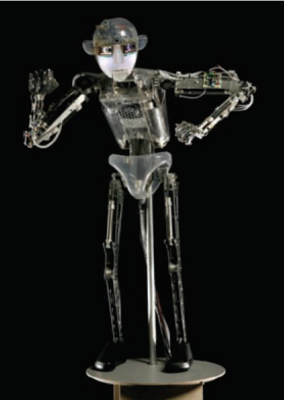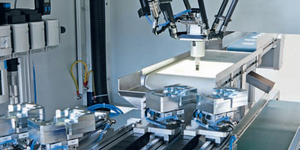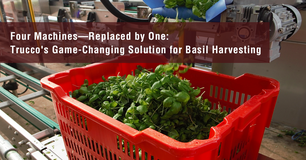Engineered Arts specialises in the design and build of highly imaginative interactive exhibitions, audio visual and mixed media installations, involving a combination of art and engineering. The company has established an enviable reputation for creating exhibits that are humorous, captivating, intelligent and informative.
The first generation of RoboThespian robots were developed in January 2005, when Engineered Arts was commissioned to create a troupe of robotic actors to perform at the Eden Project's 'Mechanical Theatre'. The initial design work focused on the necessary mechanical engineering and control systems, resulting in a hugely popular installation piece that featured tireless performers who needed no lunch. However, it soon became obvious that audiences craved more than a one-way relationship - they wanted to interact with the robots. So Engineered Arts embarked on an extensive development programme to create a set of fully-integrated hardware modules for controlling the robots'various valves and motors, and added internet connectivity to the control software, to facilitate access to web-based public information sources such as Wikipedia.
The first interactive RoboThespian's repertoire included a series of song and dance routines, and for the first time, it was able to respond to its audience vocally and through reactive physical movement. This went down a storm, but of course, eventually even this wasn't enough! People now wanted to be able to shake RoboThespian by the hand, and to make the robot perform their own routines.
As a consequence, Engineered Arts has now added articulated hands, an additional axis in each arm, and feedback sensors on all movement axes. In total there are 31 powered each of which features full proportional control.The robot contains six dc motors, but allits major movements are controlled by Festo DMSP series fluidic muscles. These very high power-to-weight pneumatic actuators essentially comprise a flexible tube with reinforcing fibres in the form of a lattice structure; they contract as they are filled with compressed air, and elongate again when the air is removed. Fluidic muscles are ideal for highly dynamic, short move length applications such as this, and their peristaltic type movementis exceptionally smooth and lifelike.
Festo currently produces three variants of fluidicmuscles, with diameters of 10, 20 and 40mm. The company is also considering developing a 5 mm version, but as yet testing and development is still underway. However, asWill Jackson, Director of Engineered Arts,points out: "For obvious reasons, we are very interested in small diameter fluidic muscles -they would make great RoboThespian fingers! For this type of non-industrial application, involving relatively low duty cycles, we could probably live with the performance figures that Festo is already achieving, so we're keen to participate in the product evaluation process. In fact, this degree of cooperation typifies our experience with Festo - wehave enjoyed superb service from the company, all the way along the line. Their technical support is second to none, their local representative is almost part of our team, and their products are always delivered on time and to budget."
The first interactive RoboThespian was installed at the Goonhilly Future World exhibitionin Cornwall. It features a new remote control console fitted with a touch-sensitive screen, linked to the robot via an industry standard LAN; the control software employs an advanced graphical user interface with'drag and drop' editing facilities, enabling visitors to create their own movement sequences using a virtual on-screen robot, and to then watch them being performed live by RoboThespian. Needless to say, the installationis proving to be a real crowd puller and is especially popular with children!


















